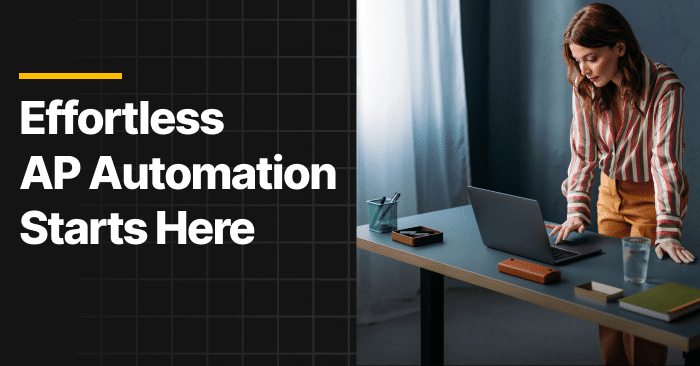
Save time and empower your finance team with Tipalti. The most complete AP solution loved by 5,000+ businesses.
How much is your company spending on just paying its bills? According to industry research, the average cost to manually process a single invoice ranges from $15 to $40. For a finance team handling 500 invoices a month, that’s more than $90,000 a year lost to a single, error-prone task.
That cost isn’t just about overhead. It’s the price of wasted time, the risk of paying a duplicate invoice, and the constant threat of fraud slipping through the cracks.
This is where automated invoice matching software comes in. This guide will explain how this automation solution can transform your AP department, breaking down the real benefits and comparing the top solutions on the market.
What is Invoice Matching Software?
At its simplest, invoice matching software is a technology that verifies the bills you receive from suppliers before you pay them. But to see it as just an automation tool is to miss its real power. Think of it less as a productivity hack and more as a foundational internal control, a digital gatekeeper that safeguards your company’s cash.
A Digital Gatekeeper for Your Payments
While speed is a welcome benefit, its core purpose is to deliver certainty in your payables process. It programmatically validates the legitimacy of every bill before it ever enters your payment workflow, protecting you from errors and fraud.
Choosing Your Level of Scrutiny
The most basic is two-way matching, which compares the invoice against the purchase order (PO). This method is perfect for services without physical delivery.
The gold standard for most businesses is automated 3-way invoice matching, which adds the goods receipt note (GRN) to confirm you’ve actually received what you’re being billed for. For industries with intense quality control, 4-way matching adds a final layer, the inspection report.
How the Tech Catches What the Human Eye Misses
The technology itself, which uses optical character recognition (OCR) for initial data extraction, is what makes this control so effective. While basic systems only match the total invoice amount, a robust automated invoice matching software performs line-level matching.
The Benefits of Automated Invoice Matching Software
Using machine learning, its artificial intelligence (AI)- powered engine meticulously compares every single line item—quantity, price, and description—against the PO. This catches small discrepancies that add up to significant losses over time.
The move from manual matching to an automated system should be viewed as a strategic shift that transforms your accounts payable (AP) function. The benefits go far beyond simple efficiency, impacting your bottom line, your risk profile, and even your relationship with your suppliers.
1. Slash Your Invoice Processing Costs
The most immediate return on investment comes from reclaiming your team’s time. According to Forbes, best-in-class AP automation can lower your invoice processing costs by up to 81%.
An automated system eliminates that time-consuming and error-prone manual data entry, freeing your skilled AP team to focus on higher-value tasks like analysis and forecasting.
2. Eliminate Overpayments and Block Fraud
How certain are you that you’ve never paid the same invoice twice? The Association for Financial Professionals reports that invoice fraud is a significant and growing threat.
An invoice matching system acts as your first line of defense by programmatically verifying every line item against an approved PO and a confirmed goods receipt, automatically flagging discrepancies and potential fraud.
3. Strengthen Controls and Ace Your Audits
A manual process relies on a paper trail of emails and approvals that is difficult to track. An automated system provides a centralized, immutable audit trail for every single transaction in your payable process.
Auditors can see exactly when an invoice was received, how it was matched, and who approved it, making audits faster and less painful.
4. Build Better Supplier Relationships
Slow payments damage relationships. On-time payments strengthen your reputation and give you the leverage to capture valuable early payment discounts.
Eliminate matching errors before they cost you
Cut invoice errors and speed up approvals. See how Tipalti automates 2-way and 3-way matching to help finance teams prevent fraud and close books faster.
Top-Rated Invoice Automation Software: 2025 Comparison
The market for AP automation is crowded, with cloud-based solutions ranging from simple bill pay apps to comprehensive global platforms. Choosing the right one depends entirely on your company’s stage, complexity, and ambition.
Understanding the Vendor Landscape
The simplest way to think about the market is in tiers. At one end, you have small and medium-sized bill pay and invoicing tools for very small businesses with simple, domestic needs. In the middle are AP automation point solutions that focus on doing one thing well, like matching.
At the most advanced end are the end-to-end global payables platforms.. These are designed for scaling, global companies that need to manage the entire AP lifecycle—from invoice intake and multi-currency matching to global payment execution and reconciliation—all within a single system.
Compare: Top Invoice Matching Software Solutions
Here’s an overview of some of the leading solutions in the AP and invoice management space:
- Tipalti: Best for end-to-end global payables automation.
- BILL: Best for SMBs managing both AR (invoicing) and domestic AP (bill pay).
- Basware: Best for large enterprises with complex procurement and AP processes.
- Coupa: Best for businesses seeking a full Business Spend Management (BSM) suite.
- Melio: Best for very small businesses and freelancers focused on simple bill pay.
| # | Solution | Best for | Pricing | Key features |
|---|---|---|---|---|
| 1 | Tipalti | End-to-end global payables automation | $$ | Specializes in global payments and tax compliance, AI and OCR automation, PO matching, mass payments, and ERP integrations. |
| 2 | BILL | SMBs managing both AR and domestic AP | $$ | Automates AP/AR with invoice capture, approvals, payments, and accounting software integration. |
| 3 | Basware | Large enterprises with complex AP processes | $$$ | Invoicing and payments with AI-powered, end-to-end procure-to-pay solutions. |
| 4 | Coupa | Businesses seeking a full BSM suite | $$$ | Manages business spend through cloud-based procurement, invoicing, and expense tools. |
| 5 | Melio | Small businesses focused on simple bill pay | $$ | Platform to pay bills and vendors online using bank transfers or cards. |
1. Tipalti
Best for end-to-end global payables automation.
Overview
Tipalti is a user-friendly, cloud-based platform designed specifically for scaling, mid-market companies that are tired of stitching together separate tools for their financial operations.
Its core function is to automate the entire accounts payable lifecycle. Far from just scanning an invoice, Tipalti’s platform manages everything from supplier onboarding and automated invoice matching, all the way through to mass global payments and real-time reconciliation with your ERP.
Key Features
- Manage the entire payables workflow, from invoice intake to global payment and reconciliation, in a single system.
- Execute mass payouts to suppliers across 200 countries and in 120+ different currencies.
- Automate global tax and regulatory compliance with digital W-9/W-8 form collection and validation.
- Go beyond basic matching with advanced 2, 3, and 4-way PO validation at the line level.
Trusted by Finance Leaders. Backed by Industry Awards.


See what our customers are saying
2. BILL
Best for SMBs managing both accounts receivable and domestic accounts payable.
Overview
BILL, formerly known as Bill.com, is a well-established leader in the small to medium-sized business space. It has built a strong reputation by providing a solid suite of tools that address both sides of a company’s cash flow.
Its unique strength lies in its dual focus on both Accounts Payable (helping you pay your bills) and Accounts Receivable (helping you create and send invoices to get paid).
Key Features
- Control both money-in (Accounts Receivable) and money-out (Accounts Payable) from one central platform.
- Simplify domestic bill payments with flexible options for your vendors, including ACH, card, and checks.
- Create and send customer invoices with built-in tracking and automated payment reminders.
- Maintain accurate books with strong, two-way synchronization to QuickBooks, Xero, and other accounting software.
Best For
BILL is an ideal solution for US-based small to medium-sized businesses that need a unified platform to manage both how they get paid and how they pay their bills.
Because its primary focus is on the U.S. market, businesses with heavy international payment needs or complex multi-currency operations may find they need a more globally-focused solution as they scale.
3. Basware
Best for large enterprises with complex procurement and e-invoicing needs.
Overview
Basware is an enterprise-grade platform that focuses on the full procure-to-pay (P2P) lifecycle. It is a solution designed for large, multinational corporations with sophisticated purchasing requirements.
A major part of its value proposition is its open e-invoicing network, which allows businesses to transact digitally with a vast number of suppliers.
Key Features
- Tap into one of the world’s largest open business networks for fully digital e-invoicing.
- Manage the entire procure-to-pay process, from initial sourcing and procurement to final payment.
- Gain deep visibility into corporate spending with powerful spend analytics and reporting tools.
- Handle high volumes of invoices with an AP automation system built for enterprise-scale operations.
Best For
Basware is best suited for large, multinational corporations that require deep procurement controls and are integrated with Tier 1 ERP systems like SAP or Oracle.
It is a different category of solution, designed for organizations where the procurement function is a central part of the business strategy.
4. Coupa
Best for businesses seeking a full Business Spend Management (BSM) suite.
Overview
Coupa is a recognized leader in the comprehensive Business Spend Management (BSM) category. Its goal is to provide a unified platform that gives organizations visibility and control over all company spending.
In this model, accounts payable is just one important component of a much larger suite that also includes procurement, strategic sourcing, employee expenses, and contract management.
Key Features
- Gain visibility and control over all company spend with a unified Business Spend Management (BSM) platform.
- Control spending before it happens with built-in procurement, sourcing, and contract management tools.
- Manage employee T&E with integrated expense reporting and corporate card programs.
- Process and pay invoices as part of a comprehensive, company-wide spend strategy.
Best For
Coupa is the ideal choice for large and procurement-led organizations that want a single platform to manage every dollar of company spend, from direct and indirect procurement to employee expenses.
Because of its comprehensive nature, it may be overly complex for a company whose primary challenge is specifically centered on automating and scaling the accounts payable workflow itself.
5. Melio
Best for very small businesses and freelancers focused on simple bill pay.
Overview
Melio is designed with one thing in mind: simplicity. It is targeted squarely at the micro-business and sole proprietor market, offering a modern and accessible replacement for a physical checkbook.
For freelancers or small shop owners who need a straightforward way to manage their outgoing payments, Melio provides an intuitive and user-friendly starting point.
Key Features
- Pay any business bill quickly using your bank account or credit card, even if your vendor only accepts checks.
- Capture bill details easily by taking a photo with your phone or forwarding an email.
- Send paper checks directly from the platform without a trip to the post office.
- Keep your books updated with simple, direct integrations to QuickBooks and Xero.
Best For
Melio is an excellent tool for businesses at the very early stages, particularly those with low-volume, primarily domestic payment needs. It effectively solves the basic problem of paying bills without the friction of old-school banking.
Because it is built for simplicity, it does not offer the advanced invoice matching, multi-step approval workflows, or deep internal controls that a scaling finance department requires to manage risk and complexity.
How to Choose the Best Automated Invoice Matching Software
Finding the right software goes beyond comparing features on a pricing page. For a true partner that can scale alongside your company, you need to ask a tougher set of questions. You need to test a platform’s ability to handle the messy, real-world complexities of a global business.
It Can Handle Global Complexity
Start with the fundamentals of the match itself. Can the system handle the complexity of matching an invoice priced in Euros to a PO that was created in US Dollars?
How does it process international tax formats, like VAT or GST, which can break simpler, domestic-focused systems?
It Actually Pays Your Bills
Look past the approval to the payment itself. Is global payment execution a core, native part of the platform, or is it just a clunky integration with a third-party bank?
The answer to that question determines whether your process will be truly seamless or just another set of stitched-together systems that struggle to sync invoice data properly.
It Scales with Your Business
Finally, consider how it will grow with you. How deep is the integration with your multi-entity ERP system or accounting system, like NetSuite? Does the platform automate the tedious but critical work of global tax compliance, like collecting W-8 and W-9 forms?
These are the questions that separate a simple automated invoice matching software from a true global payables platform.
Invoice Matching Software FAQs
How do you match invoices automatically?
An invoice matching system uses technology like OCR and AI to capture data from an invoice. It then programmatically compares line-item data against the corresponding PO and goods receipt, flagging any discrepancies based on pre-set rules and tolerances.
What is the 3-way invoice matching process?
The process involves comparing three key documents: the PO (what was ordered), the Goods Receipt Note (what was delivered), and the Supplier Invoice (what was billed). A match confirms that the business should pay the invoice.
What is the best software to create invoices?
For Accounts Receivable (AR), creating and sending invoices to your customers, popular tools include QuickBooks and Xero.
For AP, receiving, verifying, and paying invoices from your suppliers—a platform like Tipalti is the leader. Tipalti can also manage the full financial lifecycle, including AR functions like generating invoices for customers as part of its end-to-end financial operations platform.
What’s the difference between invoicing software and invoice matching software?
This is a critical distinction. Invoicing software (AR) is used to create and send invoices to your customers. Invoice matching software (AP) is used to receive, verify, and process invoices from your suppliers.
What is the 2-way match invoice process?
The 2-way match is a simpler verification that compares only the supplier invoice against the PO. It’s best used for non-inventory purchases like services or software subscriptions where a goods receipt isn’t applicable.
What is invoice matching software?
Invoice matching software helps automate the verification process between supplier invoices and supporting documents like purchase orders and receipts. This ensures that businesses only pay for goods or services that were received and correctly billed.
The software typically includes features like automated three-way matching, intelligent exception handling, and data extraction via OCR. Many platforms also support approval workflows, integrate with ERP systems, and offer reporting tools to track performance and identify bottlenecks. These systems are often customizable to fit specific business rules and workflows.
What are the benefits of using invoice matching software in accounts payable?
Automating invoice matching boosts efficiency by reducing the time spent on manual reviews and data entry. It improves accuracy by flagging mismatches and minimizing human error, especially in high-volume environments.
Cost savings come from preventing duplicate or overpayments and from capturing early payment discounts. The software also strengthens compliance by ensuring invoices meet internal controls and regulatory standards. Additional advantages include better visibility into invoice status, improved vendor relationships, and scalability as invoice volumes grow.
What features should I look for in invoice-matching software?
When choosing invoice matching software, prioritize automation capabilities like three-way matching, which links invoices to both purchase orders and receipts. Look for systems that identify exceptions and support resolution workflows to keep approvals moving efficiently.
OCR technology is another key feature, enabling the system to extract data from digital and scanned invoices. Seamless integration with your accounting or ERP platform is essential for maintaining consistent data flow. Lastly, real-time dashboards and analytics help you monitor performance, track exceptions, and refine processes over time.
What are the best practices for implementing invoice-matching software in a business?
Start with a full review of your current invoice workflow to identify inefficiencies, approval bottlenecks, and specific matching requirements. This foundation will help you choose software that aligns with your volume, complexity, and integration needs.
Select a user-friendly platform that supports your organizational structure and can be configured to reflect your matching rules and approval hierarchies. Plan your implementation with clear communication and involve key stakeholders early, including: finance, procurement, IT, and leadership should all be part of the rollout.
Additional best practices include:
• Cleansing and standardizing data before migration
• Offering hands-on training and documentation for users
• Tracking KPIs like processing time, match rates, and exception resolution
• Setting clear protocols for handling flagged invoices and maintaining audit compliance
Build a Smarter, More Reliable AP Process
A great automated invoice matching system is the foundation, the critical control that ensures accuracy and prevents fraud, but it’s only one piece of the puzzle.
A point solution solves a single problem. A true end-to-end platform, on the other hand, builds a scalable financial operation. It provides the control, visibility, and efficiency needed to empower your business to grow internationally without being slowed down by the manual, high-risk processes of the past. Get a deeper look into building a smarter AP department by downloading our AP Survival Guide Ebook.
See how end-to-end AP automation can transform your financial processes
Tipalti helps finance leaders eliminate manual payables, increase global reach, and confidently scale.




